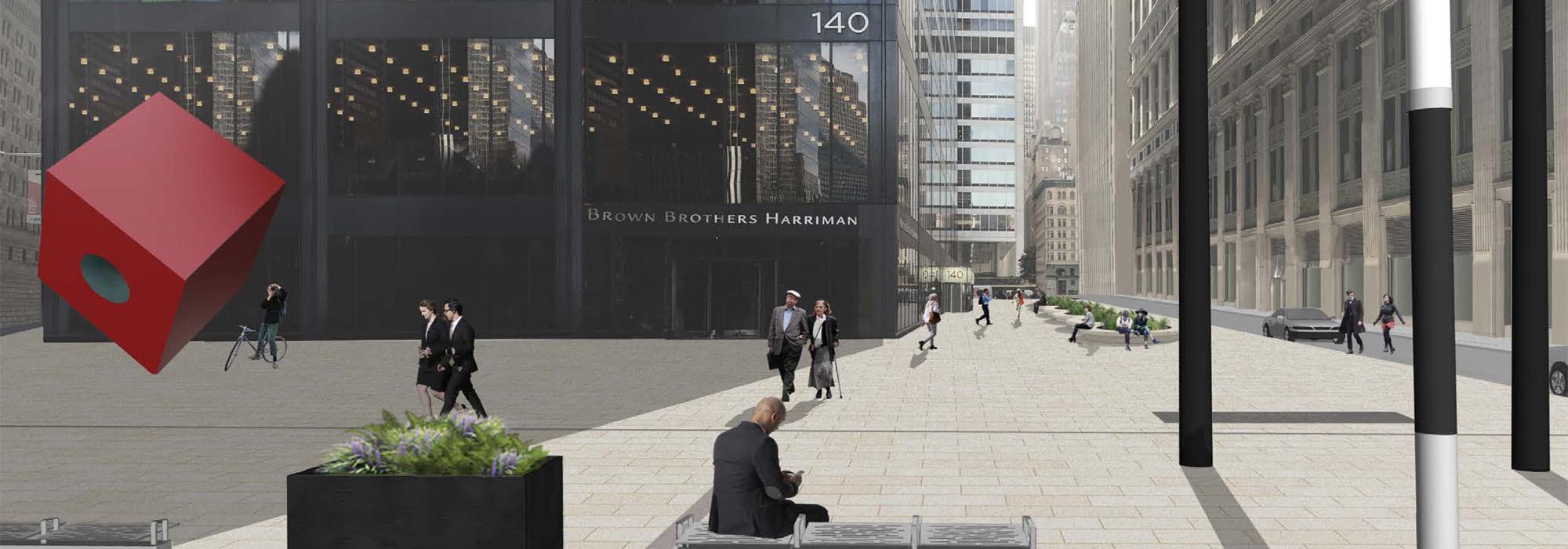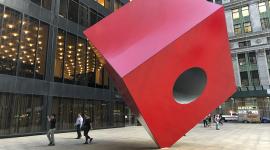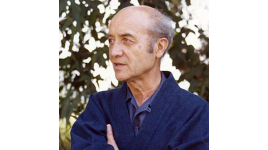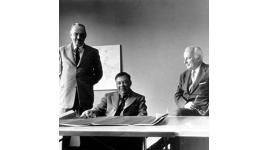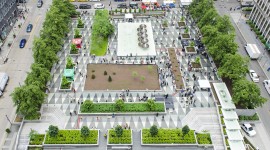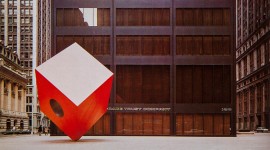Plans Altered for Redesign of 140 Broadway
On January 22, 2018, the Tribeca Trib reported that the owners of the Brown Brothers Harriman building and its Modernist plaza were asking the New York City Landmarks Preservation Commission (LPC) to approve a plan to renovate and redesign the plaza at 140 Broadway, designated as privately owned public space (POPS). The initial proposal bound for the LPC called for removing several elements introduced to the plaza after the original 1960s design, but also for adding several new features, including a raised, circular planting bed (pictured directly below), fourteen feet in diameter, at the southwestern corner of the block. The large new feature, planted with trees, would have visually rebalanced the site, negating artist Isamu Noguchi’s iconic Red Cube as the singular, dominant element in the plaza. The plan alarmed several advocacy groups, including TCLF, which added 140 Broadway to its Landslide program as an at-risk landscape on January 29 and wrote a letter to the LPC voicing strong objections. Originally scheduled to be presented on February 6, 2018, the proposal was pulled from the LPC docket after a public outcry over the proposed renovation.

A new proposal by NV5 and Higgins Quasebarth & Partners went before the LPC on March 20, 2018. In this latest plan, the large circular planter, which would have changed the compositional balance of the plaza, is notably absent. The black-granite plaque that currently protrudes from the ground plane, paying tribute to real estate mogul Harry B. Helmsley, would be replaced with another plaque to Helmsley inserted flush with the pavement. Six circular planters, each fourteen feet in diameter, with engaged seating would line the perimeter of the block along Cedar Street, replacing the four raised, linear planting boxes that were added there after the 1960s design. A dozen stainless steel light stanchions were also proposed along Cedar Street, and the plaza’s granite pavers, installed in 1999, are to be replaced with new ones that resemble the original travertine pavement. The LPC provisionally approved most elements of the new plan but objected to the light stanchions.
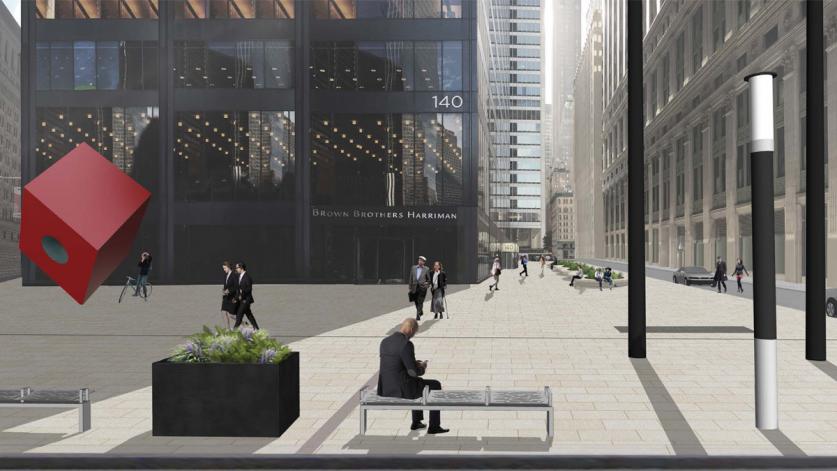
The owners of the plaza are separately submitting a request to the city’s Department of Transportation (DOT) to place four rectangular black planters and five benches on the public sidewalk along Broadway (not subject to LPC review)—a request that seeks, in part, to prohibit a line of food-vending trucks from forming there. On March 16, 2018 Curbed NY reported that the DOT has advised that the request be amended to “‘strike a balance to include vendors, planters and benches while also maximizing views of the Noguchi Cube from directly across Broadway and on diagonals through each corner. Benches and planters are proposed toward each corner, and space for 3 vendors would be reserved in the center of the block.’” Some members of the LPC, however, were opposed to the new site furniture along Broadway, expressing a desire for the design elements to be more harmonius. That view was shared by Alexandra Lange, architecture critic for Curbed, who did not mince words: “Those giant blocky planters don’t even go with the round ones on Cedar [Street].” It remains to be seen whether the multiple agencies involved can achieve something of a coordinated and comprehensive review of all design elements affecting the plaza.
Located two blocks east of the World Trade Center, the plaza and tower at 140 Broadway were designed between 1960 and 1964 by Skidmore, Owings & Merrill under the direction of Gordon Bunshaft, the firm’s chief architect. Noguchi’s steel-and-aluminum Red Cube was installed in 1968 to critical acclaim.




